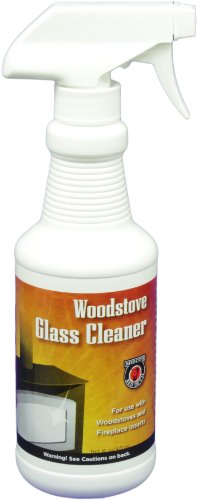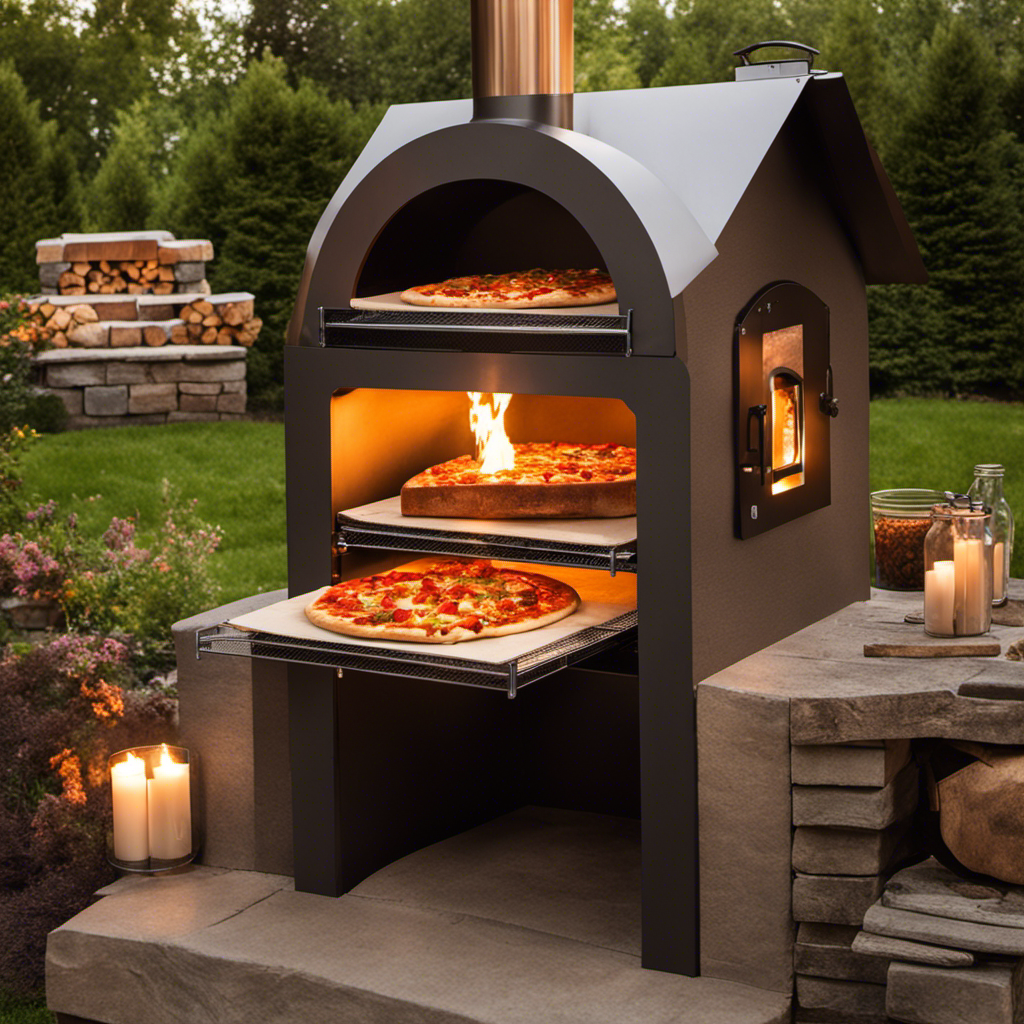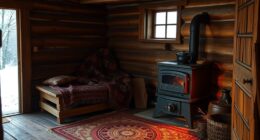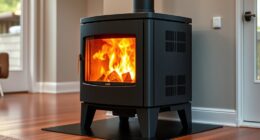I’ve discovered the secret to keeping my pellet stove running efficiently all winter long. It primarily depends on how well you store the wood pellets. The results are genuinely amazing!
In this article, I’ll share my tried and true methods for storing wood pellets in a way that keeps them dry, safe from pests, and ready to burn. From choosing the right storage container to preventing moisture damage, I’ve got you covered.
Let’s dive in and unlock the secrets to perfect wood pellet storage.
Key Takeaways
- Choose a dry area with a consistent temperature for pellet storage
- Ensure proper ventilation to prevent moisture buildup
- Regularly inspect storage area for moisture or damage
- Use moisture barriers and maintain proper ventilation to control moisture and prevent pest damage
Types of Wood Pellet Storage Containers
There are several types of containers available for storing wood pellets, such as bins and bags. Wood pellet storage solutions play a crucial role in maintaining the quality and efficiency of the pellets.
One popular option is a storage bin, which provides a large capacity to hold a significant amount of pellets. These bins are designed to keep the pellets dry and protected from moisture, ensuring their longevity.
Another option is storage bags, which are convenient and easy to handle. These bags are made from durable materials that prevent any damage to the pellets.
The benefits of using storage containers for wood pellets are numerous. They prevent moisture from seeping into the pellets, which can cause them to deteriorate. Additionally, they keep the pellets organized and easy to access.
By using storage containers, you can ensure that your wood pellets remain in optimal condition for your pellet stove.
Now, let’s discuss choosing the right location for wood pellet storage.
Choosing the Right Location for Wood Pellet Storage
Finding the ideal spot for storing wood pellets ensures optimal performance of your pellet stove. Here are some tips to help you choose the right location for wood pellet storage:
-
Temperature control: Wood pellets should be stored in a dry area with a consistent temperature. The ideal temperature for wood pellet storage is between 40°F and 50°F. Avoid storing them in areas that are prone to extreme temperature fluctuations.
-
Organizing space: Make sure you have enough space to store your wood pellets. Consider the size of your pellet stove and the amount of pellets you need. Choose a location that allows easy access and efficient organization of your pellets.
-
Ventilation: Proper ventilation is important to prevent moisture buildup and reduce the risk of mold or mildew. Ensure that the storage area has good airflow and is not prone to humidity.
By following these guidelines, you can ensure that your wood pellets are stored in the optimal conditions for long-term use.
Now, let’s move on to the next section on the proper handling and transportation of wood pellets.
Proper Handling and Transportation of Wood Pellets
When handling and transporting wood pellets, it’s important to ensure proper ventilation and avoid extreme temperature fluctuations. These transportation challenges can impact the quality and performance of the pellets.
Moisture prevention techniques play a crucial role in maintaining the integrity of the pellets during transportation. To prevent moisture absorption, it is recommended to store the pellets in a dry environment and keep them covered. Additionally, using moisture-resistant packaging materials can provide an extra layer of protection.
Proper handling and loading techniques are also essential. Avoid dropping or throwing the bags of pellets, as this can cause damage and compromise the quality. Once the pellets are loaded, ensure that they are secured properly to prevent any shifting during transit.
Tips for Storing Wood Pellets in Bulk
To maintain the quality of your bulk wood pellets, it’s important to regularly inspect the storage area for any signs of moisture or damage. Here are some tips for storing wood pellets in bulk:
-
Utilize vertical space: Consider using shelves or racks to stack the bags of wood pellets vertically, maximizing the use of limited floor space.
-
Create partitions: Install dividers or use storage bins to separate different types of wood pellets, preventing cross-contamination and making it easier to locate specific bags.
-
Ventilation is key: Ensure that the storage area has proper ventilation to prevent the buildup of moisture and condensation, which can cause the pellets to degrade.
-
DIY storage solutions: Get creative with repurposing items like sturdy plastic containers, wooden crates, or even old cabinets to create customized storage spaces for your wood pellets.
By following these tips, you can efficiently store your bulk wood pellets in small spaces using DIY storage solutions.
Now let’s move on to the best practices for storing wood pellets in bags.
Best Practices for Storing Wood Pellets in Bags
Make sure you regularly inspect your bags of wood pellets for any signs of damage or moisture to maintain their quality. Proper storage of wood pellets in bags is essential to ensure they remain in good condition for use in your pellet stove. One of the key factors to consider is the quality of the bags themselves. Look for bags that are durable and made specifically for wood pellet storage. Additionally, it’s important to store the bags in a dry and cool place to prevent moisture from seeping in. A temperature range of 40-50°F is ideal for wood pellet storage. To help you understand the importance of proper storage, here is a table showcasing the effects of different storage conditions on wood pellets:
| Storage Condition | Effects on Wood Pellets |
|---|---|
| Moisture | Damaged pellets |
| High Temperature | Pellet degradation |
| Exposure to Sunlight | Fading of pellets |
Preventing Moisture and Pest Damage in Wood Pellet Storage
When it comes to storing wood pellets, it’s essential to prevent moisture and pest damage to ensure their quality and effectiveness.
There are several moisture control techniques that can be employed, such as using moisture barriers and maintaining proper ventilation.
Additionally, implementing pest prevention methods like sealing any cracks or gaps and using pest repellents can help to avoid any unwanted visitors.
Lastly, it’s crucial to store the pellets in proper conditions. This includes keeping them in a dry and cool area, away from direct sunlight and any potential sources of moisture or pests.
Moisture Control Techniques
Moisture control is crucial for wood pellet storage. Using a dehumidifier helps reduce moisture content, preserving pellet quality. Storing pellets in a dry, well-ventilated area away from moisture sources is essential. Implementing these techniques prevents pellet deterioration and maintains efficiency. Another key aspect is preventing pest damage.
Pest Prevention Methods
It’s important to take steps to prevent pests from damaging your stored wood pellets. Proper pest control is crucial for maintaining the quality and effectiveness of your fuel source. Here are some effective methods to keep pests away from your wood pellet storage:
-
Seal all entry points: Make sure there are no gaps or cracks in the storage area where pests can enter.
-
Keep it clean: Regularly clean the storage area to remove any spilled pellets or debris that can attract pests.
-
Store pellets off the ground: Elevate your pellets on pallets or shelves to prevent pests from accessing them.
-
Use pest repellents: Consider using natural pest repellents, such as peppermint oil or mothballs, to deter pests.
-
Regular inspections: Inspect your storage area regularly to identify and address any signs of pest infestation promptly.
By implementing these pest prevention methods, you can ensure that your wood pellets remain safe and free from damage.
Now let’s move on to discussing the proper storage conditions for wood pellets.
Proper Storage Conditions
To maintain the quality of your fuel source, ensure that the storage area meets the proper conditions. Proper storage conditions are crucial for maximizing the lifespan of wood pellets.
The ideal temperature for storing wood pellets is between 40 and 60 degrees Fahrenheit. It is important to avoid extreme temperatures, as excessive heat or cold can cause the pellets to deteriorate quickly. Additionally, it is recommended to store wood pellets in a dry area to prevent moisture absorption, which can lead to pellet degradation.
A cool, dry basement or a dedicated storage shed are great options. By maintaining the appropriate temperature and moisture levels, you can ensure that your wood pellets remain in optimal condition for a longer period of time.
Now, let’s move on to discussing the safety measures for storing wood pellets at home.
Safety Measures for Storing Wood Pellets at Home
Ensure you follow safety guidelines when storing wood pellets for your pellet stove. Proper storage is crucial to maintain fire safety and prevent accidents. Here are some safety measures to consider:
-
Storage Location:
-
Choose a cool, dry area away from potential fire hazards like open flames or electrical equipment.
-
Avoid storing pellets in basements or garages prone to high humidity or extreme temperatures.
-
Ventilation Requirements:
-
Ensure adequate ventilation to prevent the buildup of carbon monoxide, a colorless and odorless gas that can be deadly.
-
Install carbon monoxide detectors near the storage area and throughout your home for early detection.
Are the Storage Methods for Pellet Wood and Wood Pellets the Same?
When considering storing pellet wood efficiently, it’s important to differentiate between storing loose pellet wood and wood pellets. Pellet wood should be kept in a dry, covered area to prevent rotting, while wood pellets should be stored in a dry area to prevent moisture from compromising their quality.
Frequently Asked Questions
How Long Can Wood Pellets Be Stored Before They Go Bad?
Wood pellets can be stored for a long time before they go bad. Proper wood pellet storage techniques, such as keeping them in a dry and cool place, can prevent degradation. Watch for signs of wood pellet degradation, like crumbling or disintegration.
Can Wood Pellets Be Stored Outside in a Shed or Garage?
I store wood pellets in my basement for my pellet stove. They can also be stored in a shed or garage, as long as they are protected from moisture and pests. Wood pellets are also commonly used for animal bedding.
What Is the Best Way to Clean Wood Pellet Storage Containers?
To clean wood pellet storage containers, use a brush or vacuum to remove any dust or debris. Wipe down the containers with a damp cloth and mild detergent. Regular maintenance is key to keeping your storage containers clean and ready for use.
Are There Any Fire Hazards Associated With Storing Wood Pellets?
Fire prevention and safety precautions are crucial when storing wood pellets. It’s important to keep them in a cool, dry place away from flammable materials. Regularly inspect the storage area to ensure there are no potential fire hazards.
How Often Should Wood Pellet Storage Containers Be Inspected for Damage or Wear?
I regularly inspect my wood pellet storage containers for signs of damage or wear. It’s important to stay on top of wood pellet storage maintenance to ensure the containers are in good condition and safe to use.
Conclusion
In conclusion, storing wood pellets for a pellet stove requires careful consideration and proper maintenance.
By selecting the right storage containers, finding the ideal location, and implementing effective handling and transportation methods, you can ensure the longevity and quality of your wood pellets.
Remember to follow best practices for storing in bulk or bags, and take precautions against moisture and pest damage.
Lastly, prioritize safety measures to keep your home and loved ones protected.
With these tips in mind, you’ll be well-equipped to store your wood pellets with ease and efficiency.
Logan’s affair with adventure began in childhood. He hailed from a small town where vast forests bordered one side and endless shores stretched on the other. His days were spent exploring uncharted woods, climbing tall trees, or listening to the tales of old sailors. This early immersion in a world brimming with stories and mysteries became the foundation of his passion for writing.











